X
Electric hoists represent their own machinery, strength, and toughness, while the stage is elegant, flowing, and soft, with conflicts and collisions between the two.
Stage electric hoists are valuable aids in building stage scenes and presenting performances. They play a crucial role in various settings, such as theaters, concerts, opera houses, dance venues, and
Category : V7 Stage Electric Series
Get a Quote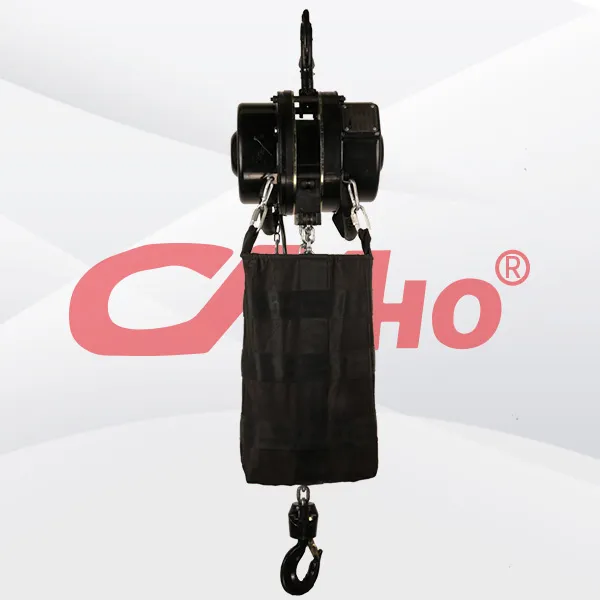
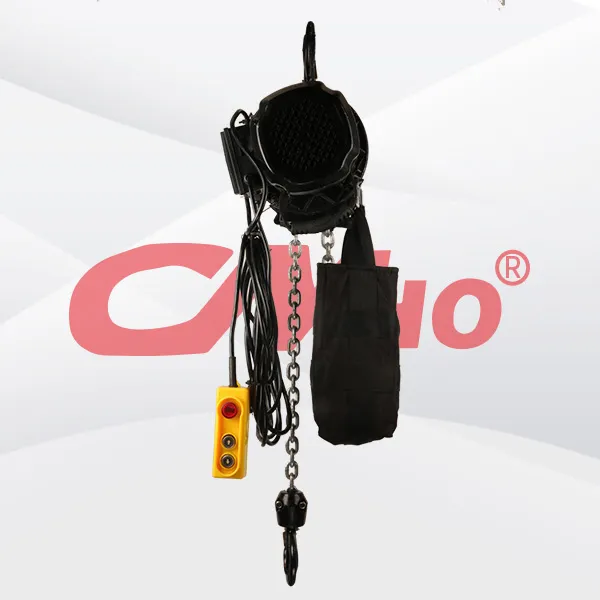



Product Details
The commissioning of the stage electric hoist after installation mainly includes no - load commissioning, load commissioning, and inspection of various key components and performance. The specific content is as follows:No - load Commissioning1. **Appearance and Connection Inspection**: Before power - on commissioning, check the appearance of the electric hoist again to ensure that no components are loose, damaged, or improperly installed. Examine all connection parts, including chains, wire ropes, hooks, electrical connections, etc., to ensure that the connections are firm and reliable. 2. **Inching Test**: After powering on, perform inching operations. Press the up and down buttons separately, with each inching time controlled within 2 - 3 seconds. Observe whether the running direction of the electric hoist is correct, and whether there are any abnormal noises and vibrations in components such as the motor and reducer. If the running direction does not match the button indication, cut off the power immediately, check the electrical wiring, and make adjustments. 3. **Full - range No - load Operation**: After confirming that the inching operation is normal, conduct a full - range no - load operation test. Let the hook of the electric hoist rise from the lowest position to the highest position, and then descend from the highest position to the lowest position, repeating the operation 3 - 5 times. During the operation, closely observe the running condition of the electric hoist, including whether the operation is smooth, whether there is any jamming, and whether the chain or wire rope runs smoothly. 4. **Limit Switch Test**: Check the functions of the upper and lower limit switches. When the hook rises or descends close to the limit position, the limit switch should act in a timely manner, cut off the power supply, and stop the operation of the electric hoist. Conduct multiple limit tests in both the upward and downward directions to ensure that the limit switch operates accurately and reliably, and an appropriate safety margin is left. Generally, the limit switch should function when the distance from the limit position is 5 - 10 cm. 5. **Braking Performance Test**: During the no - load operation, perform braking operations multiple times and observe the braking effect of the electric hoist. When braking, the electric hoist should stop quickly without obvious sliding. Measure the braking distance, and generally, the no - load braking distance should not exceed 2 - 3 mm.
Load Commissioning
1. **Gradual Loading**: After the no - load commissioning is qualified, start the load commissioning. First, load 25% of the rated load, lift the heavy object steadily to a height of about 0.5 - 1 meter above the ground, and keep it for 5 - 10 minutes. Observe the running condition and braking performance of the electric hoist. Check whether there are any abnormal deformations, heat - generation, etc. in each component, and whether the force on the chain or wire rope is uniform. 2. **50% and 75% Rated Load Commissioning**: Conduct commissioning with 50% and 75% of the rated load in sequence, repeating the above operation steps. Under different loads, check whether the starting, running, and braking of the electric hoist are smooth, whether the motor current is within the rated range, and whether the oil temperature of the reducer is normal. Generally, the oil temperature should not exceed 60°C. 3. **100% Rated Load Commissioning**: Conduct full - load commissioning. Lift the heavy object with the rated load to a height of 1 - 1.5 meters above the ground and conduct a static load test for no less than 10 minutes. Then, conduct a full - range lifting operation test with no less than 3 runs, and observe the overall performance of the electric hoist under full - load conditions. Check the strength and stability of each component, as well as the reliability of the braking device. The braking distance should meet the specified requirements, generally not exceeding 1/1000 of the rated lifting speed. 4. **Overload Protection Test**: Some electric hoists have an overload protection function, and an overload protection test can be carried out. When the load reaches or exceeds the set overload protection value, the electric hoist should automatically stop the upward operation and send out an alarm signal. Generally, the overload protection value is set at 105% - 110% of the rated load.Other Inspections1. **Running Speed Check**: Under no - load and different load conditions, measure the actual running speed of the electric hoist and compare it with the rated speed. The deviation between the actual running speed and the rated speed should be within ±5%. 2. **Noise and Vibration Check**: During the entire commissioning process, pay attention to monitoring the noise and vibration of the electric hoist during operation. The noise should be uniform without abnormal noises, and the vibration amplitude should be within the allowable range. If excessive noise or abnormal vibration is detected, stop the machine for inspection, find out the cause, and troubleshoot the problem.
3. **Electrical System Check**: Check various parameters of the electrical system, such as voltage, current, insulation resistance, etc. The voltage fluctuation range should be within ±10% of the rated voltage, and the insulation resistance should be not less than 0.5 MΩ. At the same time, check the operating status of electrical components, such as whether the actions of contactors, relays, etc. are sensitive and reliable.
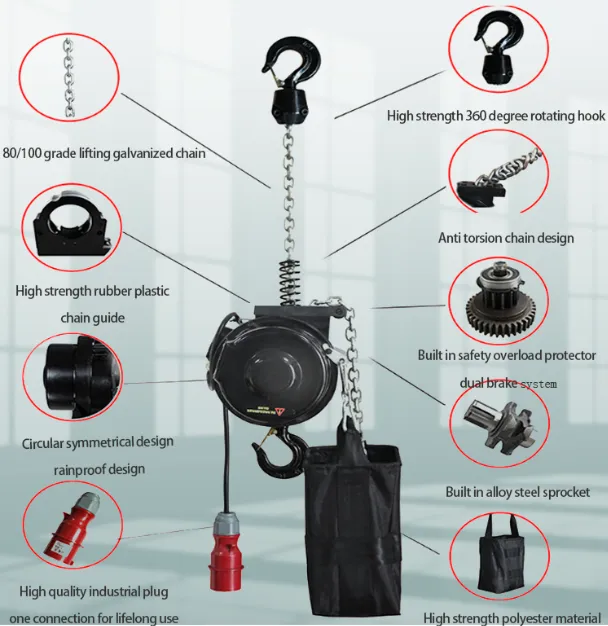
RELATED PRODUCTS .
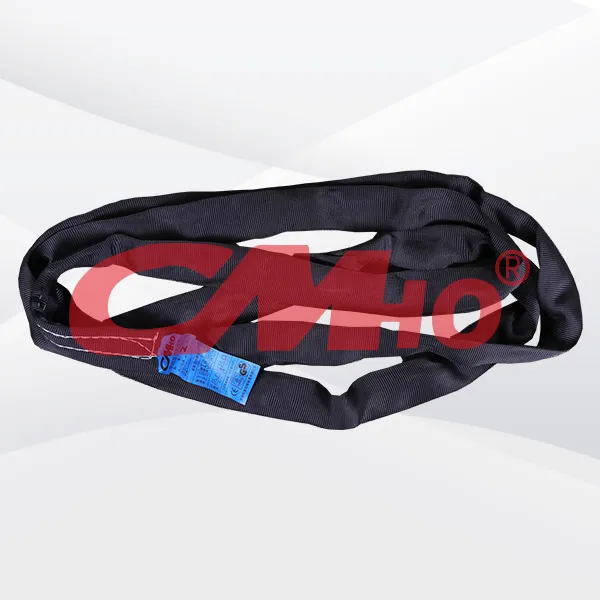
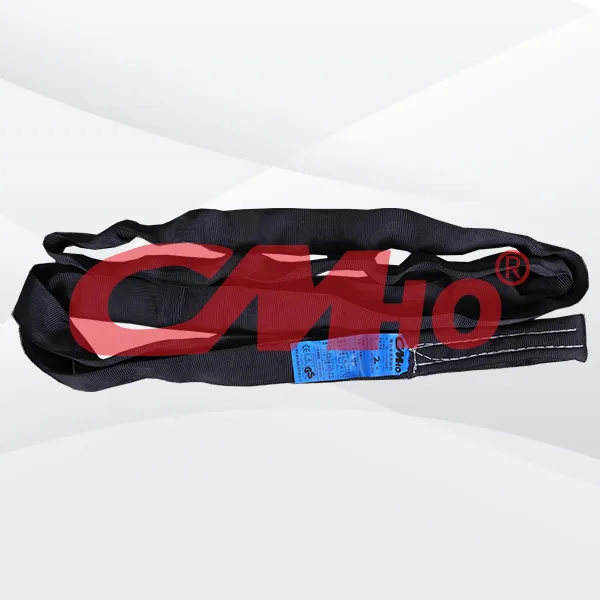
The lifting sling is a flexible rigging used for lifting operations. It is usually made of high-strength fiber materials such as polyester fibers and aramid fibers, and some are also composed of metal
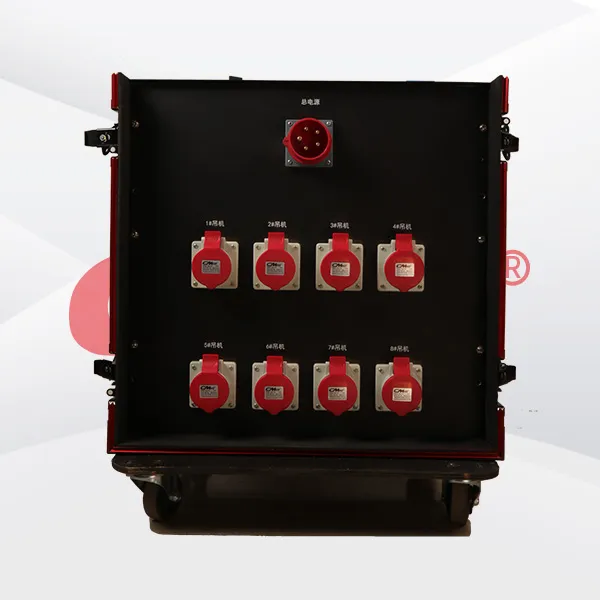
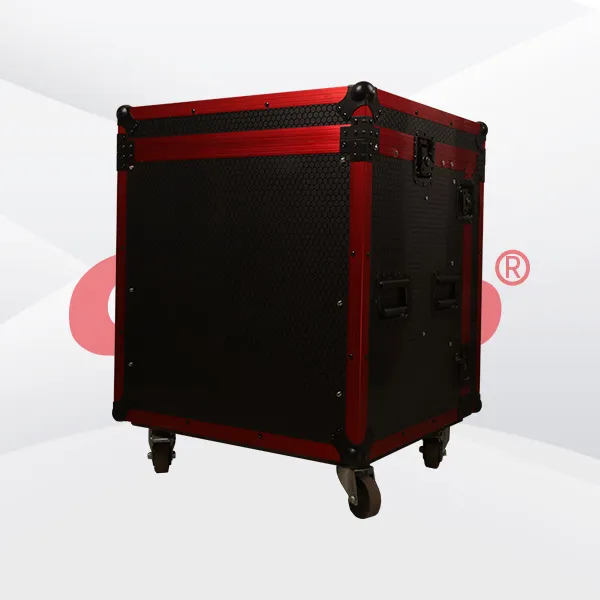
The stage hoist controller is a device used to control the hoist devices on the stage (usually electric hoists or hand chain hoists and other lifting equipment). It is mainly used to precisely adjust
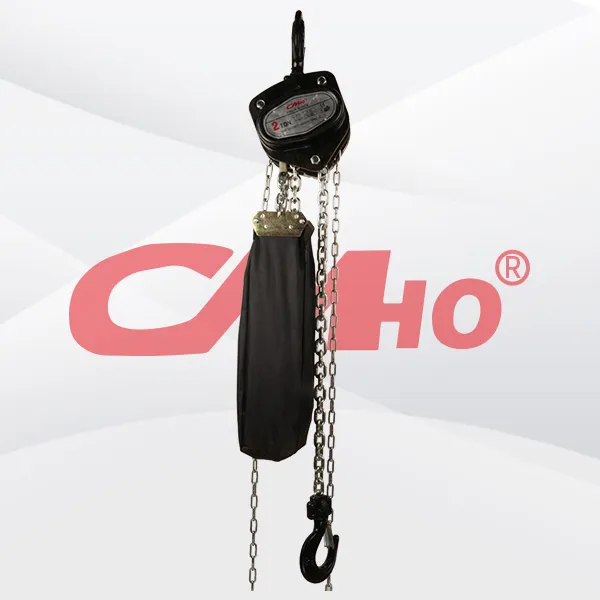
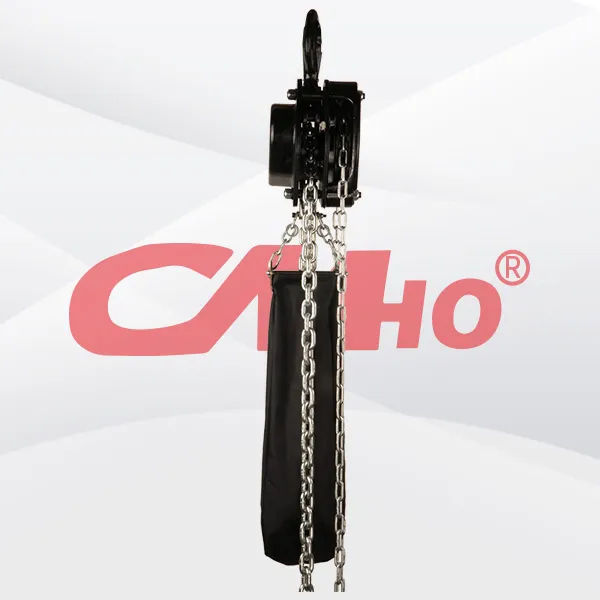
The lifting capacity of the light hand chain hoist for the stage is also related to factors such as the usage environment, operation mode, and the setting of the safety factor. In practical use, it is
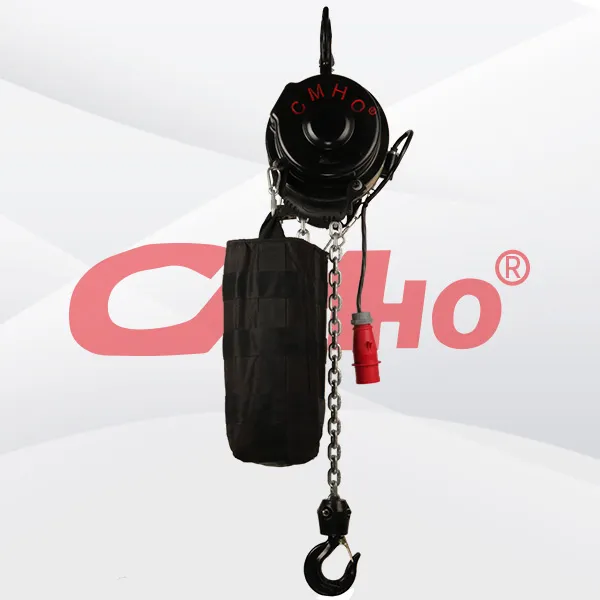
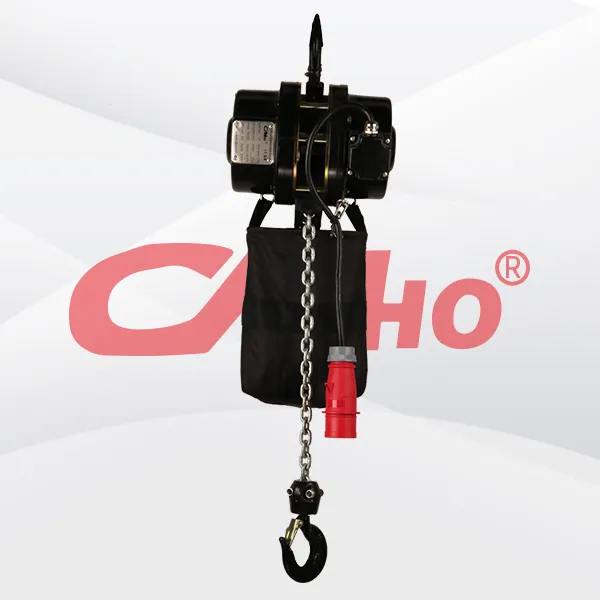
The electric hoist for truss is an electric hoisting device specially designed for hoisting and moving truss structures. It has precise positioning and control functions, enabling it to accurately hoi
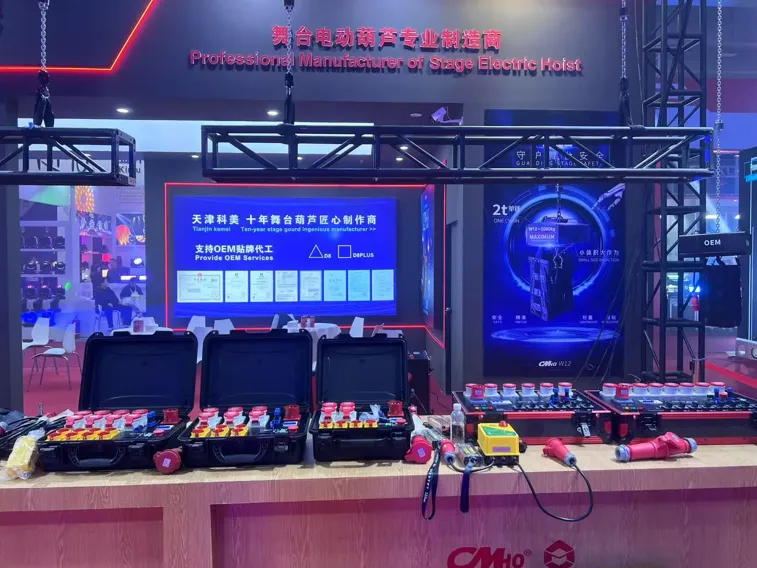
2025-02-28
创始人
0
The participation of Tianjin Kemei in the Guangzho...
Tianjin Kemei made a remarkable and eye-catching appearance at the Guangzhou (International) Performing Arts Equipment, Intelligent Acoustic, Optical and Electrical Products...
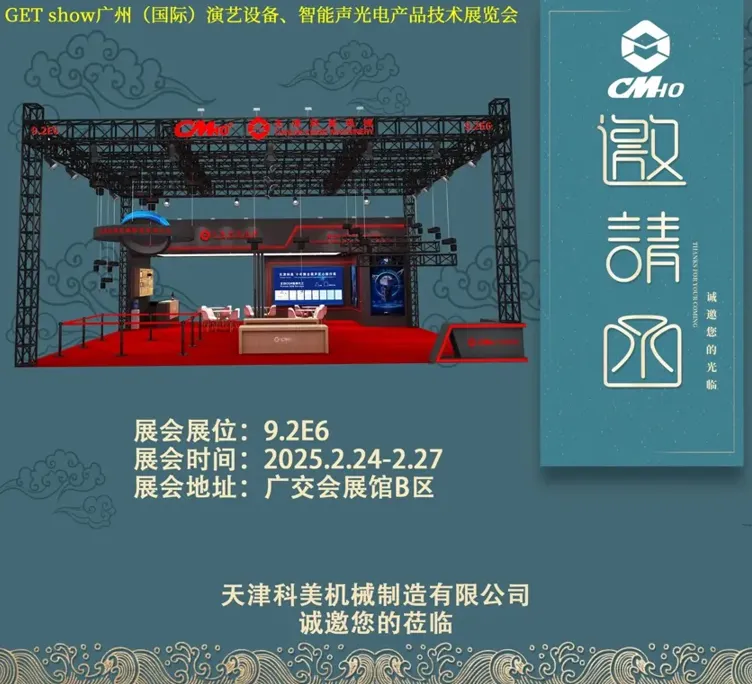
2025-02-27
创始人
0
Guangzhou (International) Performing Arts Equipmen...
In the era of the rapid development of stage lifting equipment and intelligent acousto - optic technology, every industry event serves as a crucial opportunity for innovatio...
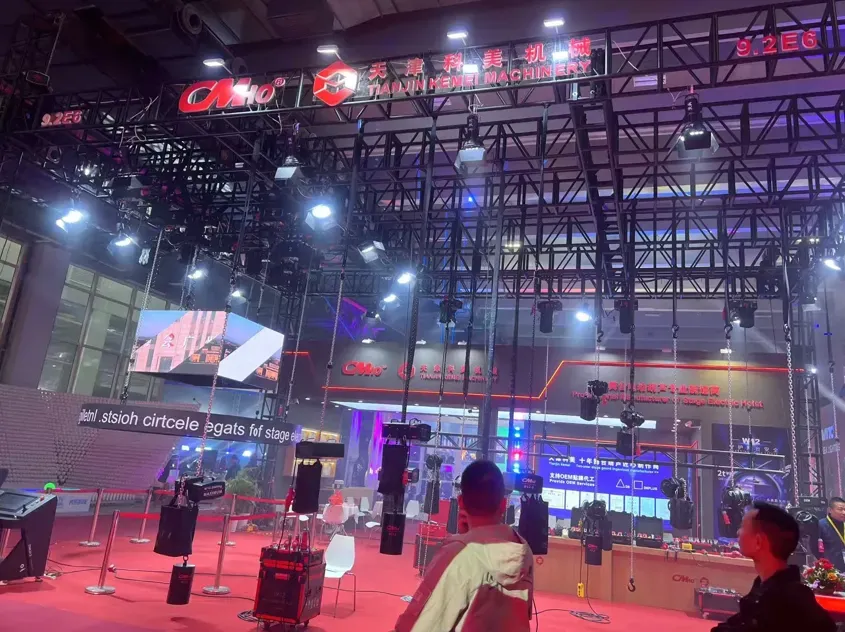
2025-02-27
创始人
0
GET show Guangzhou (International) Performing Arts...
Tianjin Kemei Machinery Manufacturing Co., Ltd. has been deeply engaged in the stage equipment manufacturing field for many years and has developed into a modern benchmark e...
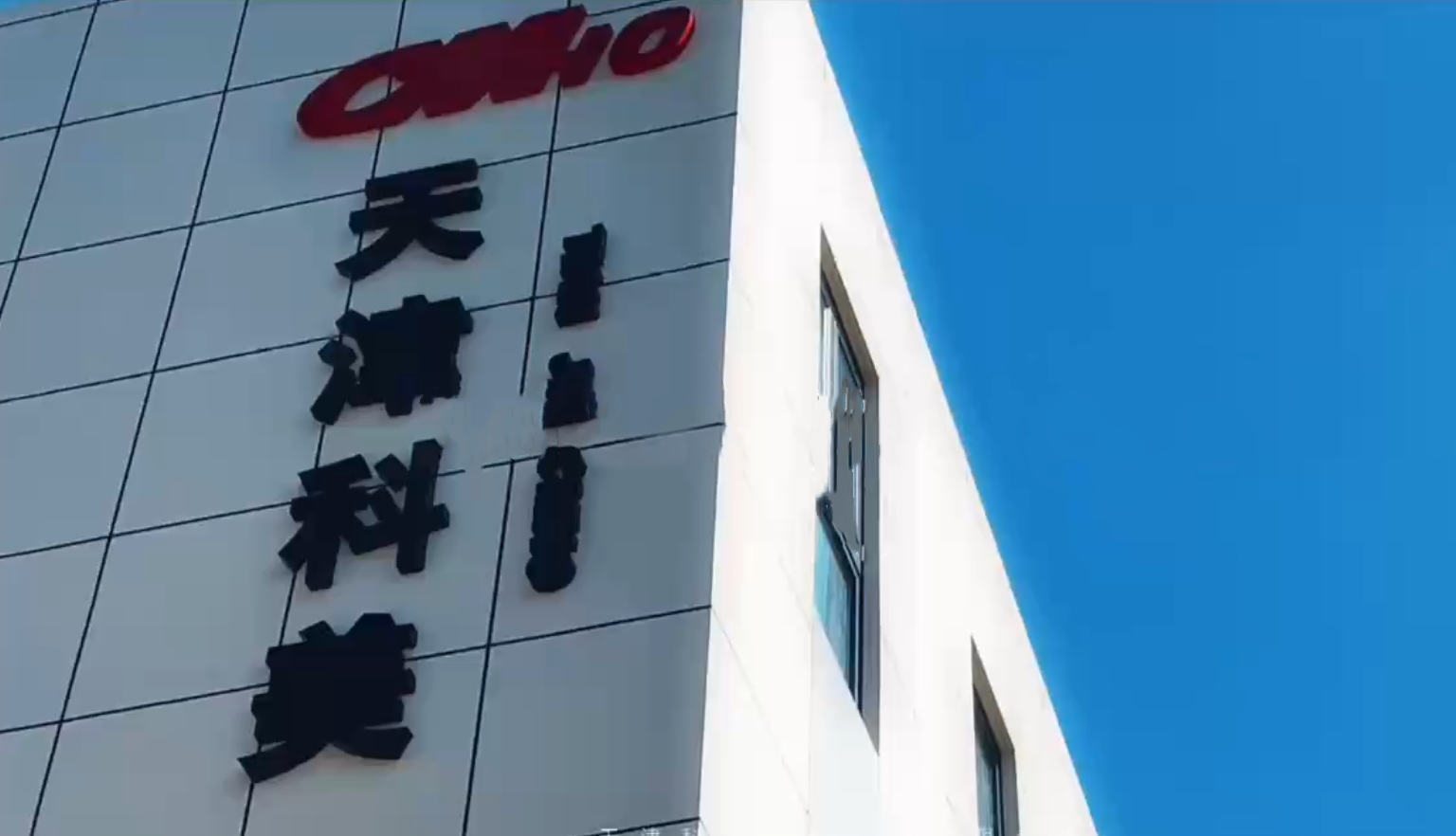
2024-09-24
admin
0
Tianjin Kemei Machinery Manufacturing Co., Ltd. Ne...
Tianjin Kemei Machinery Manufacturing Co., Ltd.: New Starting Point, New Journey - New Factory Relocation Record

